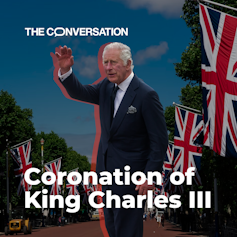News
Raise a glass to your cousin, King Charles III

FILE: Prince Charles visits the Big Bang Fair at the University of Essex in 2014. (Photo: University of Essex ./Flickr, CC BY 2.0)
Millions of people around the world will be watching as Charles is crowned king of the United Kingdom and 14 other Commonwealth realms. And it’s fair to say that a huge number of them could claim some degree of kinship with the new monarch as distant cousins at least. It’s how family trees work.
Celebrity guests on the BBC’s genealogy TV show Who Do You Think You Are often find out they’re descended from royalty. In 2021, British soap opera actor Danny Dyer learned he was descended from Edward III. Actor Benedict Cumberbatch, is related to Richard III.
Indeed it happens enough on these programmes that it led a BBC royal correspondent to write a piece about whether we are all related to royalty.
The answer is yes, it’s simply a matter of degree. As science presenters Adam Rutherford and Hannah Fry showed, we can use maths to demonstrate this.
Edward III ruled in the 14th century and he and his, presumably very tired wife, Philippa, had 13 children. Six of them had children themselves, who included cousins King Richard II and Henry IV. There are records of 321 great, great grandchildren of Edward III.

This piece is part of our coverage of King Charles III’s coronation. The first coronation of a British monarch since 1953 comes at a time of reckoning for the monarchy, the royal family and the Commonwealth.
For more royal analysis, revisit our coverage of Queen Elizabeth II’s Platinum jubilee, and her death in September 2022.
Some of these great, great grandchildren will have had many children and some may have had none. Let’s be conservative and say each person had, on average, two children. We know from population growth estimates it’s likely to have been higher than that, but we’re going for a ballpark number.
Crunch the numbers
We also need an average generation time (at what age are people having
children). A standard assumption is around 25 years so let’s use that number. These figures estimate that by about 1600 Edward III would have 20,544 descendants. Britain’s population was about 4.2 million people at the time. That means around one in 210 people alive at that time was a direct descendant of Edward III, or 0.5% of the population.
Most of them would likely have had no idea they were descended from Edward. After several generations, the descendants of his younger children may not have owned any land and were likely merchants, farmers, or tradespeople.
Now let’s work the maths backwards in time.
We all have two biological parents and four grandparents. You have eight great grandparents, their parents are your 16 great, great grandparents. If you go back about 15 generations to 1600, you have 32,768 13-times great grandparents.
And we’re only talking a few hundred years ago. We know it won’t be quite that many because sometimes families intermarry, but you are still going to have thousands of people who were all equally your 13-times great grandmums and grandads, going about their business at that time.
So, if you have any British ancestry, what’s the chance one of those 32,000 or so people was a direct descendant of Edward III one of those one in 210 people in 1600? The chances that not one of your 13-times great grandparents was directly descended from Edward III are tiny.
This is only an estimate, of course. Trace your family tree backwards and it rapidly branches outwards, at least at first. But soon it starts to collapse in on itself as relatives marry cousins or other relatives. Family trees are more like a thicket the further you go back.
How to prove your link to royalty
As you go further back, the records start to become patchier. Normally only wealthy people kept family trees.
What you want to do is find a gateway ancestor. This is someone with a documented family tree which links to royalty.
For Danny Dyer, it was his five-times great grandfather, James Bullivant who married a woman called Ann Gosnold. She was the three-times great granddaughter of Robert Gosnold. His mother was part of the Tollemache family, related to King Henry VIII’s chief minister, Thomas Cromwell. Danny’s ancestor, Thomas Cromwell’s son, married Jane Seymour’s sister, Elizabeth. The Seymours descended from the Plantagenets, who were descended from Edward III.
Follow up on marriages in your family tree and investigate the families your ancestors are marrying into. Look for gentry, clergy or farmers as they are more likely to have recorded marriages and births. There are a number of websites which can help you. For example the online collections for Herald’s Visitations from the 16th and 17th centuries were records for the nobility. Burke’s Peerage also has massive genealogies of well-known historical families around the world.
Of course, programmes such as Who Do You Think You Are? often concentrate on well-known ancestors. And I find myself rolling my eyes at the telly when they say a famous historical figure is a celebrity’s direct ancestor. Benedict Cumberbatch may be related to Edward III but he’s equally related to numerous peasants from the same era.
It’s fair to ask what it really means to say that someone is a direct descendant of royalty. My experience is that it means something different to each person. As a geneticist I would find it fascinating to know how I’m related to royalty, but I’d be equally interested to know about the lives of my other many ancestors. To me the most thought-provoking aspect is that we’re all related to one another.![]()
Turi King, Professor of Genetics and Public Engagement, University of Leicester
This article is republished from The Conversation under a Creative Commons license. Read the original article.





















